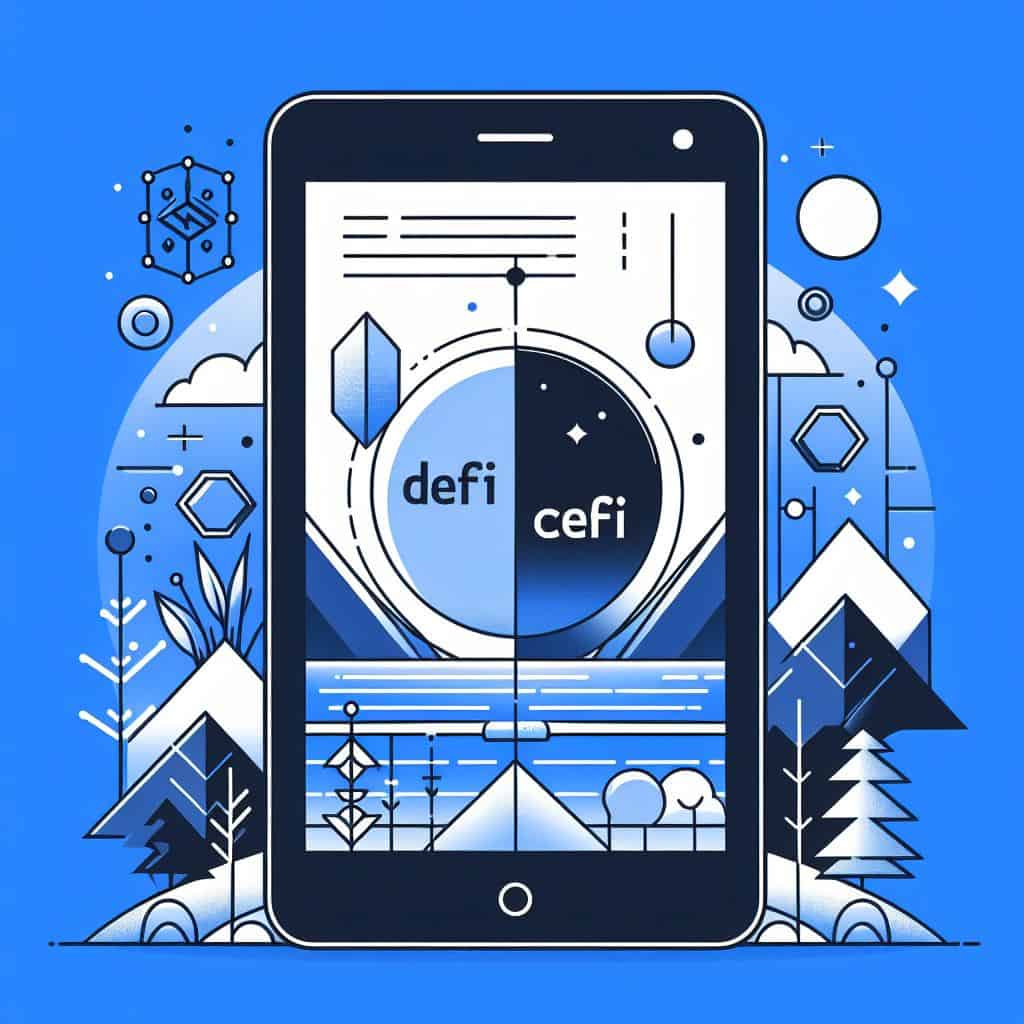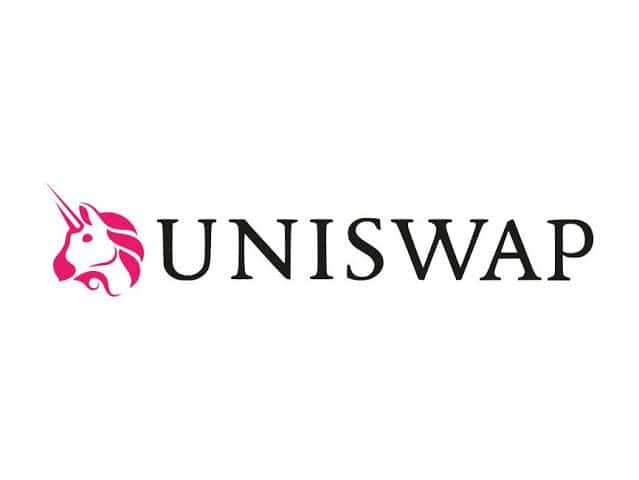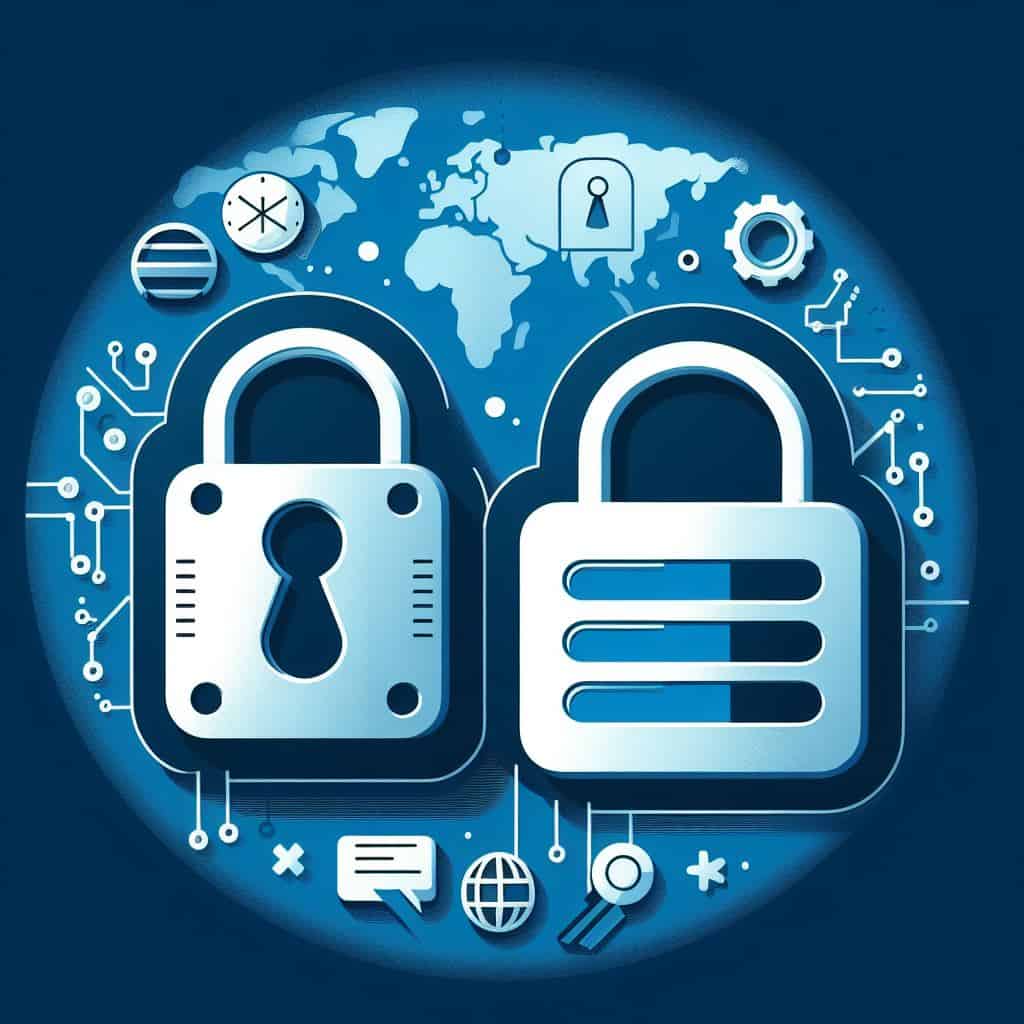What is DeFi?

One term you have to get used to seeing, if you spend any time in the crypto space, is “DeFi”. Short for Decentralized Finance, DeFi, is a revolutionary concept that is transforming the traditional financial landscape.
But what does this term mean and how is it relevant in the real world? In this blog, we’ll demystify the concept of decentralized finance and explore the constituents of a DeFi system.
With that said, let’s dive right into the article!
What is Defi?
Defi (short for Decentralized Finance) refers to the use of blockchain technology and smart contracts to create decentralized financial applications thatoperate without the need for intermediaries such as banks or financial institutions.
Think of DeFi like the traditional financial system where individuals and businesses carry out different kinds of transactions.
The major difference here is that while traditional financial operations are controlled and regulated by central authorities (resulting in high transaction fees and limited accessibility), decentralized operations are carried out on a highly-secured peer-to-peer system (called a blockchain) that anyone can access from anywhere in the world.

Still confused? Don’t worry, it took me weeks of learning and testing DeFi protocols to understand the concept of decentralized finance. Stick with me as I simplify each term, helping you grasp the broader meaning of this new lingo.
The Building Blocks of DeFi
Decentralized finance is a new technology that seeks to power financial operations of the future. In this section, we’ll discuss the various frameworks that decentralized finance systems are built on.
Blockchain technology
Simply put, a blockchain is a cryptographically-protected public distributed ledger used to store data.
You might be curious about the significance of a data storage system in the operation of a complex network of decentralized transactions. Well, blockchains, or distributed ledger technologies, are decentralized systems that employ a peer-to-peer network for validating and appending new data to the ledger.
DeFi platforms use these technologies to facilitate immutable peer-to-peer financial transactions. A good example would be Uniswap. This decentralized exchange protocol is built on the Ethereum blockchain and it allows users to exchange cryptocurrencies directly from their wallets.
Blockchains are decentralized systems that employ a peer-to-peer network for validating and appending new data to the ledger.
TheDeFiMovement
Smart Contracts
Smart contracts are pre-written code programs that execute automatically when certain conditions are met between involved parties.
Let’s say you want to exchange your SHIBA INU tokens (SHIB) for Tether tokens (USDT).
You connect your wallet to an exchange protocol like Uniswap and transfer your tokens, receiving USDT tokens in return. This quick and seamless transaction was mostly facilitated by a smart contract.

The contract is programmed to verify that you have enough SHIB tokens in your wallet to initiate the transaction and subsequently send you the USDT tokens. This removes the need for intermediaries or brokers, ensuring speedy transactions with minimal fees.
Smart contracts work like traditional contracts. A good example would be the case of a loan where one party lends money or assets to another party who promises to repay it with interest. The loan contract sets the terms and conditions of the borrowing and lending, such as the amount, the interest rate, the duration, and the collateral.
Cryptocurrency tokens
Cryptocurrency tokens play a pivotal role in the operation of decentralized finance systems. From enabling access to network functionalities to facilitating transactions on an ecosystem, these virtual assets act as catalysts in the functioning of a DeFi protocol.
As we progress further into the article, we’ll dive deeper into the various roles these tokens play in DeFi projects.
How is DeFi used (how does it work)
Imagine you want to purchase a new car but don’t have the money to pay upfront. You walk into a bank and apply for a loan.
For your loan to be approved, the bank will first have to conduct a few checks to assess your creditworthiness and financial stability. They may examine your credit score, income, and existing debts to determine if you qualify for the loan (some lenders may even ask that you provide some form of collateral).
These processes can take anywhere from a few hours to several days, and even when your loan gets approved (yes, your application can get declined) you still have to make interest payments monthly or as stipulated in the contract.
Here’s where the building blocks we discussed earlier come in. Smart contracts can help automate these processes, notably reducing transaction time and eliminating intermediaries.
The smart contract secures the borrower’s assets as collateral until the loan is repaid. Additionally, a secure and immutable ledger containing a complete history of all transactions ever made on that network will be very helpful in verifying borrowers’ assets ensuring 100% security for both lenders and borrowers.
Combining these crucial elements results in a decentralized lending/borrowing protocol.
This represents just one use case of decentralized systems within the finance industry, where peer-to-peer lending and borrowing leverage blockchain technology to empower individuals and bypass traditional intermediaries.
However, the potential extends far beyond loan/borrowing. In the sub-sections below, we will delve into other exciting applications of decentralized finance, exploring:
1) Decentralized Exchanges (DEXs)
A decentralized exchange, or DEX, is a platform that allows users to trade cryptocurrencies without relying on a centralized intermediary. Unlike traditional exchanges, DEXs do not hold users’ funds or personal information.
Instead, they use smart contracts to execute trades directly between users, offering greater security, privacy, and transparency. Some examples of popular DEXs are Uniswap, SushiSwap, and PancakeSwap.

2) Yield Farming & Liquidity Pools
Yield farming is a way of earning passive income by providing liquidity to DeFi protocols. Liquidity pools are pools of tokens that are locked in a smart contract to facilitate trading or lending.
Users who deposit their tokens into liquidity pools receive rewards in the form of fees, interest, or governance tokens. Yield farming involves switching between different pools to maximize returns, often using complex strategies and leverage.
3) Decentralized Insurance
Decentralized insurance is a form of peer-to-peer insurance that leverages blockchain technology and smart contracts to provide coverage for various risks.
Unlike traditional insurance, decentralized insurance does not rely on centralized entities such as brokers, underwriters, or claims adjusters.
Instead, it uses decentralized mechanisms such as crowdsourcing, staking, oracles, and governance to create and manage insurance products. Some examples of decentralized insurance platforms are Nexus Mutual, Cover Protocol, and Etherisc.
4) Decentralized Identity Management
Decentralized identity management is a system that allows users to create and control their own digital identities without depending on centralized authorities or intermediaries.

Users can store their identity data on a decentralized network, such as a blockchain, and use cryptographic keys to prove their ownership and authenticity. Decentralized identity management enables users to protect their privacy, enhance their security, and access various services and applications.
Some examples of decentralized identity management projects are uPort, Civic, and SelfKey.
5) Decentralized Autonomous Organizations (DAOs)
A decentralized autonomous organization, or DAO, is a collective that operates according to a set of rules encoded in a smart contract. DAOs are designed to be self-governing, transparent, and democratic, without the need for human intervention or hierarchy.
DAOs can have various purposes, such as managing funds, coordinating actions, or providing services. Members of a DAO can participate in decision-making by voting, proposing, or delegating. Some examples of DAOs are MakerDAO, Compound, and Aragon.
6) Tokenization of Assets
Tokenization of assets is a process that converts real-world assets, such as stocks, bonds, real estate, or art, into digital tokens that can be traded or transferred on a blockchain.
Tokenization of assets aims to increase the liquidity, efficiency, and accessibility of the asset markets, as well as reduce the costs and risks associated with intermediaries, regulations, and fraud.
Tokenization of assets can also enable fractional ownership, programmable features, and new business models. Some examples of tokenization of asset platforms are Polymath, tZERO, and OpenSea.
Listed above are just a few of the use cases of decentralized systems. As the space continues to grow, we’ll get to see more applications of this innovative technology.
Defi vs. Centralized finance (Cefi)

Defi and centralized finance, also known as Cefi, represent two different paradigms in the financial industry. Cefi relies on centralized authorities such as banks, financial institutions, and regulatory bodies to facilitate financial transactions and provide financial services.
In contrast, Defi operates in a decentralized manner, without the need for intermediaries.
Cefi platforms are governed by regulations and rely on a trusted third party to validate transactions and ensure compliance.
Defi, on the other hand, leverages the transparency and security of blockchain technology to validate transactions without the need for a central authority. This gives Defi a significant advantage in terms of efficiency, cost-effectiveness, and accessibility.
While Cefi platforms offer a familiar and regulated environment, they often come with limitations such as high fees, lengthy transaction times, and limited accessibility. Defi, on the other hand, provides a more inclusive and efficient alternative, offering lower fees, faster transactions, and global accessibility.
What is an example of a DeFi project
The Defi ecosystem is rapidly evolving, with numerous protocols and projects gaining popularity. Some of the most well-known Defi protocols include:
MakerDAO
MakerDAO is a decentralized autonomous organization that operates the Dai stablecoin, which is backed by collateralized assets. Users can lock their assets as collateral and mint Dai, which can be used as a stablecoin for various transactions and investments.
Uniswap
Uniswap is a decentralized exchange protocol that allows users to trade cryptocurrencies directly from their wallets. It operates on an automated market-making mechanism, enabling users to provide liquidity and earn fees in return.

Compound
Compound is a lending and borrowing protocol that allows users to lend their assets and earn interest or borrow assets by collateralizing their existing holdings. The interest rates are determined algorithmically based on the supply and demand of the assets.
Aave
Aave is a decentralized lending protocol that offers users the ability to lend and borrow various cryptocurrencies. It also features unique features such as flash loans, which allow users to borrow assets without collateral as long as the borrowed amount is returned within the same transaction.
Benefits and advantages of Defi
Defi offers numerous benefits and advantages over traditional financial systems.
Without the need for banks or financial institutions, users can directly interact with smart contracts and execute transactions in a peer-to-peer manner, reducing fees and processing times
TheDefiMovement
Elimination of intermediaries
One of the key advantages is the elimination of intermediaries, which leads to lower costs and increased efficiency.
Without the need for banks or financial institutions, users can directly interact with smart contracts and execute transactions in a peer-to-peer manner, reducing fees and processing times.
Global accessibility
Traditional financial systems often exclude individuals who do not have access to banking services. Defi platforms, on the other hand, are open to anyone with an internet connection, providing financial services to the unbanked populations around the world.
This inclusivity has the potential to drive financial inclusion and empower individuals economically.
Asset control and ownership
Defi also enables users to have complete control and ownership of their assets. Instead of relying on a centralized authority to hold and manage funds, users hold their private keys, giving them full control over their assets.
This eliminates the risk of funds being frozen or seized, providing users with a greater sense of security and autonomy.
What are the disadvantages of Defi
While Defi offers numerous advantages, it is not without its risks and challenges. One of the main disadvantages is the potential for smart contract vulnerabilities.
Smart contracts are coded by developers and are subject to bugs or vulnerabilities that could be exploited by malicious actors. Several high-profile incidents have highlighted the importance of rigorous auditing and security measures in the Defi space.
Another challenge in Defi is the volatility of digital assets. Cryptocurrencies are known for their price volatility, which can result in significant gains or losses for users.
While Defi platforms provide opportunities for earning high returns through lending or yield farming, they also carry the risk of losing a substantial portion of the invested assets.
Regulatory uncertainty is also a challenge in the Defi space. As Defi platforms continue to gain popularity, regulators around the world are grappling with how to regulate these decentralized systems.
The lack of clear regulations can create uncertainty for users and hinder the growth of the Defi ecosystem.
How to get started with Defi
Getting started with Defi is relatively straightforward, but it requires some basic knowledge and precautions. Here are the steps to get started with Defi:
1) Educate yourself

Before diving into Defi, it’s important to understand the basic concepts and principles of blockchain technology, smart contracts, and decentralized finance. There are numerous educational resources available online, including tutorials, articles, and video courses.
2) Choose a Defi wallet
A Defi wallet is a digital wallet that allows you to securely store your cryptocurrencies and interact with Defi platforms. Some popular Defi wallets include MetaMask, Trust Wallet, and Ledger.
Choose a wallet that supports the cryptocurrencies you intend to use and offers robust security features.
3) Research Defi platforms
There are numerous Defi platforms and protocols available, each offering different services and features. Research and compare different platforms to find the ones that align with your financial goals and risk appetite.
Consider factors such as security, user experience, and the reputation of the platform.
4) Start small and diversify
When entering the Defi space, it’s advisable to start with a small amount of funds and gradually increase your exposure. Diversify your investments across different protocols to mitigate risks and maximize potential returns. Keep track of your investments and regularly review their performance.
5) Stay informed and be cautious
The Defi space is evolving rapidly, and new projects and protocols are constantly emerging. Stay informed about the latest developments, news, and security practices. Be cautious of potential scams or phishing attempts and only interact with trusted platforms and projects.
Research and compare different platforms to find the ones that align with your financial goals and risk appetite.
TheDefiMovement
Defi wallets and security considerations
When participating in Defi, it’s crucial to prioritize security and protect your funds. Defi wallets play a vital role in securing your digital assets and interacting with Defi platforms. Here are some security considerations when choosing and using a Defi wallet:
1) Choose a reputable wallet
Select a wallet from a reputable provider that has a proven track record in security. Look for wallets that have undergone security audits and have a strong community following.
2) Enable two-factor authentication

Two-factor authentication adds an extra layer of security to your wallet by requiring a second verification step, typically through a mobile app. Enable this feature to protect your wallet from unauthorized access.
3) Use a hardware wallet
Hardware wallets offer the highest level of security by storing your private keys offline. Consider using a hardware wallet, such as Ledger or Trezor, to securely store and manage your digital assets.
4) Beware of phishing attempts
Be cautious of phishing attempts that aim to trick you into revealing your wallet’s private keys or seed phrases. Always verify the legitimacy of the website or application before entering sensitive information.
5) Keep your wallet software up to date
Developers regularly release updates to address security vulnerabilities and improve the functionality of Defi wallets. Keep your wallet software up to date to ensure you have the latest security features.
Future trends in Defi
The Defi ecosystem is continuously evolving, and several trends are shaping its future. Here are some key trends to watch out for
- Layer 2 scalability solutions: As the popularity of Defi continues to grow, scalability has become a pressing issue. Layer 2 solutions, such as state channels and sidechains, aim to address this challenge by enabling faster and cheaper transactions without compromising security.
- Cross-chain interoperability: Interoperability between different blockchains is crucial for the growth and development of the Defi ecosystem. Several projects are working on solutions that allow users to seamlessly transfer assets and liquidity across different blockchain networks.
- Regulatory developments: As Defi gains mainstream attention, regulators around the world are exploring ways to regulate these decentralized systems. Regulatory developments will play a crucial role in shaping the future of Defi and determining its long-term viability.
- Enhanced user experience: User experience is a key factor in driving the adoption of Defi. Projects are focusing on improving the user interface, simplifying complex processes, and providing a seamless and intuitive experience for users.
Conclusion
Decentralized finance, or Defi, is revolutionizing the way we think about and interact with financial systems. By leveraging blockchain technology and smart contracts, Defi offers numerous benefits such as lower costs, increased accessibility, and greater control over assets.
However, it is important to be aware of the risks and challenges associated with Defi and take necessary precautions to protect your funds.
As the Defi ecosystem continues to evolve, it is likely to reshape the financial industry and drive financial inclusion on a global scale.
By understanding the key concepts, researching the available platforms, and staying informed about the latest developments, you can take advantage of the opportunities presented by Defi and embark on a decentralized financial journey.
Embrace the power of Defi and unlock a world of financial possibilities.
Check out our next guide on How To Get Started In DeFi!
FAQs
What are DeFi tokens?
Defi tokens are proprietary virtual currencies used for unique purposes on a Defi protocol such as lending, liquidity provision, incentivization, etc.
These tokens are cryptocurrencies built solely for the purpose of facilitating transactions (or rewarding participants) on a decentralized platform. Examples of DeFi tokens include Uniswap (UNI), Chainlink (LINK), Aave (AAVE), etc.
Is Binance a DeFi?
No, Binance is not a DeFi platform. Binance is one of the largest centralized cryptocurrency exchanges in the world with over 150 million users worldwide.
The cryptocurrency exchange was founded by Changpeng Zhao in 2017 and currently offers various crypto trading services to users in 50+ countries.
Can DeFi replace banks?
DeFi technologies are very promising, however it’s too early to conclude that they will replace traditional banks. One of the reasons for this is that traditional banks are able to extend credit based on factors like income and creditworthiness, allowing borrowers to access funds exceeding their net worth.
In contrast, lending DeFi protocols prioritize collateralization, requiring borrowers to deposit assets of equal or greater value to the loan amount. For example, a 5,000 USDT loan would require approximately 5,000 USDT in collateral.
What is the difference between DeFi and crypto?
DeFi is a broad term for the application of decentralized technologies in financial operations while cryptos, short for cryptocurrencies, are digital currencies built and stored on a decentralized network.
Both concepts leverage decentralized ledger technologies, with the primary distinction lying in their respective utilization and intended purposes.
